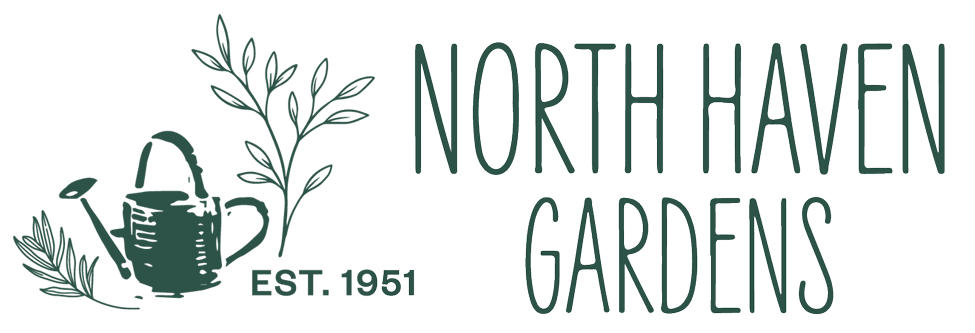What Are Beneficial Insects?
The insects that can become problems in our gardens and landscape spaces have predators that help to keep their numbers in check, and these are considered the ‘beneficials’. Help your plants and preserve the environment by first encouraging their natural populations, and employing these and other amazing creatures as needed with the following tips.
- Minimize Pesticides— restricting pesticides to only affected areas will reduce their impact on beneficial species trying to establish. Both organic and conventional pesticides can interact with and affect insect populations, and all bees are especially sensitive. Often the need for pesticides will decrease as the beneficial insect population increases, as the garden life begins to balance out.
- Plant Natives— offering food in the form of the native plants that attract native insects is important. Plant for year‐round flowering, fruiting, and seeds for a consistent supply. Annual flowers, vegetable and herb plants gone to seed, and even some common weeds can help.
- Provide Shelter— leaving garden debris such as leaves, mulch, branches, and logs will give these insects a home and protection from the elements. Rock piles and areas of bare ground can offer additional space.
- Offer Water— all living things need access to water. Shallow dishes or small ponds with fresh water help them year round.
- Use Biostimulants— molasses, seaweed, compost tea, and worm castings are just some of the products available to help encourage the establishment of these insects.
Remember: Identifying both the insect to control and the damage they cause can offer important clues to determine the problem. Knowing when and how to intervene is critical in order to avoid unnecessary damage to other species. Many insects and other animals are safe and effective for controlling harmful insects, and some are available to purchase in order to establish natural populations quicker or to address more immediate needs of a specific plant or area.
Many species of flies, bees, wasps, beetles, and true bugs are beneficial, as well.
Most importantly, the majority of these insects are invaluable as pollinators.
In addition, lizards, dragonflies, hummingbirds, bats, and many spiders also feed on insects.
Beneficial Insects to Buy:
NOTE: the availability and the proper releasing time of these will greatly vary with the seasons and weather.
BENEFICIAL NEMATODES – are microscopic worms of specialized, varying species in the soil that control fleas, fire ants, grubs and cutworms. Applied to a lawn or garden in early spring or late fall, natural populations will establish in those areas that are continued to be regularly irrigated.
LACEWINGS – are deadly enemies of small caterpillars, aphids, and other soft‐bodied insects. Can be introduced into the garden as soon as the weather is consistently above 50°.
LADY BEETLES – have an enormous appetite for aphids ‐ one of our most common plant pests. Both the adults and their larvae are equally relentless predators. Release throughout the growing season at dusk. Lightly water before releasing. Non‐native species are available for purchase.
PRAYING MANTIDS – have both the fascinating adults and their nymphs alike that lie in wait for an insect which strays too close, then strike out to grab it with their front legs. They will devour anything that moves.
TRICHOGRAMMA WASPS – are species of micro‐wasps that attack the eggs of many species of moths. Best released in early morning or evening when direct sunlight will not hit the cards containing the eggs.
MASON BEES – such as the blue orchard are valuable in fruit production. A single mason bee can efficiently pollinate60 times more fruit than the typical honeybee. About the size of a house fly, these amazing pollinators are very gentle and rarely sting. They team well with honey bee pollinators, but stay closer to the nest.
Other Common Beneficial Insects:
SYRPHID FLIES – larvae attack soft bodied insects including aphids, caterpillars, thrips, and scale. Once an adult, these small creatures are excellent pollinators and can be seen hovering over the garden. The larvae of this fly can control up to 70% of aphid infestations and can be found starting in late spring.
ASSASSIN BUGS – are an ambush type predator, who use their stout mouthparts as they prey on aphids, large caterpillars, beetles, and flies. These insects appear in early spring and may be found commonly in the garden. Handle with care, as some assassin bugs can administer a painful, though harmless bite.
BRACONID WASPS – are tiny wasps that use pest insects as hosts for their eggs, including aphids, caterpillars, and leaf miners. Female wasps may lay between 50 and 200 eggs making them an excellent pest control in the garden. To detect these wasps look for discolored aphids husks or visible pupal casings in caterpillars.
Plants for Attracting Beneficial Insects:
- Herbs– if allowed to bloom, many are ideal with nectar and larval sources of food for beneficials.
- Ornamental Grasses– most give habitat in the form of screening, seeds for food, or stems to lay eggs.
- Annuals– many annuals can offer nectar sources and habitat for insects.
- Perennials— plants that dependably bloom can become a very reliable source of food and habitat both.
- Vegetables– those that have ‘bolted’ or gone to flower and seed can assist in providing food.
- Ground Covers– offer shelter as well as nesting sites; some offer nectar sources as well.

